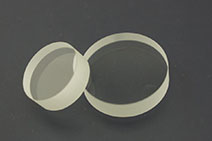
1.designation and classification of colored optical glass
Colored optical glass is the color or use of glass and the first letter of the Chinese phonetic alphabet to represent the category. There are 20 types of filters in the catalog, 120 grades.
According to the spectral characteristics of colored optical glass, the spectral characteristics are divided into three categories.
1.1 Cut-off type optical glass
Glass is named after the glass through the boundaries of the filter length to indicate that there are 5 types of 36 grades. For example, the glass through the boundary is 490nm, for the golden yellow glass, then named JB490.
1.2 Selective absorption glass
The color or use of glass is divided into 14 categories, a total of 72 brands. Glass is arranged in no special sense.
1.3 Neutral type glass
The glass is named according to their Chinese Pinyin first letter combinations, the number is based on the thickness of the glass is 2mm, the average transmission bit of 400nm to 700nm to represent, for example the average thickness of 2mm glass transmission ratio is 70%, is named AB70, this kind of glass has a total of 10 grades, the AB65 AB30, AB5 three grades of the wavelength range of 400nm-660nm.
2. Spectrum characteristics
According to the spectral characteristics of light is not glass, can be divided into three categories
2.1 Cut-off type optical glass
The spectral curve of the glass is shown in Figure 1. The spectral characteristics of the spectral curve of the glass can pass through the boundary wavelength of TJ, and the transmission ratio of K is 0 and the slope of the curve is expressed by T.
When the glass thickness is defined by the threshold wavelength, the wavelength of the transmission ratio (T 0) 50% of the prescribed wavelength on the spectral transmittance curve is better than that of the wavelength one.
T 0 indicates that the transmission ratio of the specified wavelength, is to refer to the spectral curve, the provisions of a wave length of 0 corresponding to the transmission ratio, but also the curve of high transmission ratio.

The spectral slope (K) is the difference between the D and the corresponding optical density tjnm at the time of the glass thickness, which is at the wavelength of tj-20nm and wavelength.
K = D λtj-20nm- Dλtj
2.2 Selective absorption optical glass
Only through the glass (or absorption) one (or several) in the wavelength range of light, see Figure 2 of its spectral characteristics index is to define the thickness of the glass in a specific wavelength of the transmission ratio and allows the transmission ratio deviation value.

2.3 Neutral type optical glass
The wavelength in the visible light in the glass without choice uniform absorption spectral transmittance curve shown in Figure 3, the spectral characteristics index is based on the average transmission ratio Tp, the average transmission ratio of allowable deviation range of delta Tp. Maximum allowable deviation value Qz to indicate.

Average transmittance is defined as the glass in the specified wavelength range, the average value of the transmission ratio measured by the glass every 20nm, in order to TP.
The average transmittance of allowable deviation refers to the average transmission the grade glass than the allowed deviation values to a Tp representation.
The maximum allowable deviation value refers to the absolute difference between the maximum transmission ratio and the average transmittance of the glass in the specified wavelength range, and the Qz representation.
3.physical characteristics
3.1 Refractive index(ND)
The refractive index of the glass is determined by the characteristic spectral line D=5.893.nm of the sodium element, which is expressed by ND.
3.2 proportion(s)
Determination of the specific gravity of glass by hydrostatic weighing.
3.3 Chroma value(x,y,Y)
According to the method provided by the international lighting Committee (CIE) in 1931 and 1964, the color value of glass under A and D65 standard light source was determined.
3.4 Thermal characteristics
3.4.1 Linear expansion coefficient(α)
The relative change rate of the length of the glass when the temperature rises 1. The expansion coefficient of the target is a, far from the average value of the temperature range of 20 to 300.
3.4.2 transition temperature(Tg)
When the expansion glass suddenly changes, the corresponding temperature is the transition temperature of the sample, the temperature of the glass viscosity to 1013 PA seconds.
3.4.3 Softening temperature(Ts)
When the physical properties of the glass changes dramatically, the expansion of the volume is close to zero, that is, the softening temperature of the glass, the viscosity of the glass is close to 10 Pa.
3.5 Color change ability(v)
Color glass by color temperature and color temperature of two liter drop glass composition, its ability to transform Mild (mired) to indicate the value. L color glass is blue, the brand is SSB, with a negative Milede. Drop color amber glass, the Milede value is positive.
Color glass serial number is arranged according to Milede value. For example SSB130 from 3200K to 5400K, its ability to transform negative 130Mired value rose color glass. SJB130 from 5400K to 3200K, its ability to transform color temperature drop glass is 130 Mired.
4.chemical stability
The chemical stability of the glass, is made of powder (DW) method to measure the water resistance and acid resistance (DA) to express, the determination method and grading reference method for the determination of Japanese optical glass industry association JOGIS quasi optical glass chemical stability (powder method) 06-1975.

